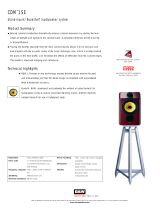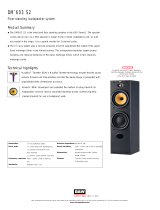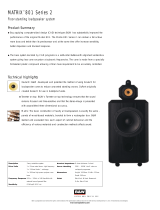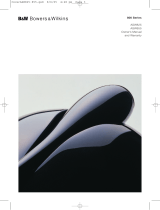
IMPORTANT SAFETY INSTRUCTIONS
The CT8 XO active crossover is a powered device. Before use, please read and heed the following
instructions:
Caution:
To reduce the risk of electric shock, do not dismantle the apparatus and do not expose the apparatus
to rain or moisture. No user-serviceable parts inside. Refer servicing to qualified personnel.
Explanation of Graphical Symbols
The lightning flash within an equilateral triangle is intended to alert you to the presence of
uninsulated “dangerous voltage” within the product’s enclosure that may be of sufficient
magnitude to constitute an electric shock to persons.
The exclamation point within an equilateral triangle is intended to alert you to the
presence of important operating and maintenance (servicing) instructions in the literature
accompanying the appliance.
WARNINGS:
1 Read these instructions.
2 Keep these instructions.
3 Heed all warnings.
4 Follow all instructions.
5 Do not use this apparatus near water.
6 Clean only with dry cloth.
7 Do not block any ventilation openings. Install in accordance with the manufacturer’s
instructions.
Owner’s Manual
3
8 Do not install near any heat sources such as radiators, heat registers, stoves, or other apparatus (including
amplifiers) that produce heat.
9 Do not defeat the safety purpose of the polarized or grounding-type plug. A polarized plug has two blades
with one wider than the other. A grounding type plug has two blades and a third grounding prong. The wide
blade or the third prong are provided for your safety. If the provided plug does not fit into your outlet, consult
an electrician for replacement of the obsolete outlet.
10 Protect the power cord from being walked on or pinched particularly at plugs, convenience receptacles and
the point where they exit from the apparatus.
11 Only use attachments/accessories specified by the manufacturer.
12 Use only with the cart, stand, tripod, bracket, or table specified by the manufacturer, or
sold with the apparatus. When a cart is used, use caution when moving the cart/apparatus
combination to avoid injury from tip-over.
13 Unplug this apparatus during lightning storms or when unused for long periods of time.
14 Refer all servicing to qualified service personnel. Servicing is required when the apparatus has been
damaged in any way, such as power-supply cord or plug is damaged, liquid has been spilled or objects have
fallen into the apparatus, the apparatus has been exposed to rain or moisture, does not operate normally, or
has been dropped.
15 When replacement parts are required, be sure the service technician has used replacement parts specified
by the manufacturer or have the same characteristics as the original part. Unauthorised substitutions may
result in fire, electric shock or other hazards.
16 For continued protection against fire hazard, use fuses only of the correct type and rating. Mains fuses are
located inside the casing of the appliance and should be replaced only by an authorised operative.
17 Isolation of the appliance from the power supply is by means of either the switch on the rear of the
appliance or removal of the power cord from the rear of the appliance or removal of the power cord
from the wall power outlet. Either the wall outlet or the rear of the appliance must remain freely
accessible at all times while the apparatus is in use.
18 This product should be operated only from the type of power source indicated by the marking adjacent to the
power cord entry. If you are not sure of the type of power supply to your home, consult your product dealer
or local power company.






























